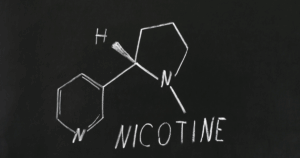Dreams have fascinated humanity for millennia, offering a unique window into the intricate and mysterious workings of our subconscious mind. While many dreams are fleeting snippets of daily experiences, there exists a peculiar category known as fever dreams—those vivid, intense, and often bizarre nighttime visions that occur during illness. In this comprehensive guide, we will explore what a fever dream is, examine its common characteristics, uncover the scientific connection between fever and dreaming, and provide practical advice for managing these unsettling experiences.
What Is a Fever Dream?
A fever dream is an unusually vivid and surreal dream that typically occurs when a person’s body temperature is elevated due to illness. Unlike ordinary dreams, fever dreams are often described as intense, emotionally charged, and persistently memorable, lingering in the mind long after waking. These dreams tend to be more visually striking, sometimes disturbing, and may even include elements that defy logic or reality. Fever dreams are most commonly reported during high fevers, when the body is fighting off infections or other illnesses.
While fever dreams can sometimes be amusing or creatively stimulating, they often add to the discomfort of being sick, making restful sleep even more elusive. Understanding what triggers these dreams and how to manage them can help individuals achieve better sleep quality and overall well-being during periods of illness.
Mental Health Center of San Diego
What Do Fever Dreams Feel Like?
Fever dreams are distinctive for several reasons, and people who experience them often report a variety of unusual sensations and emotions. Here are some of the most common features of fever dreams:
- Vivid Imagery: One of the hallmark symptoms of a fever dream is the extraordinary vividness of the experience. Colors appear brighter, sounds are more pronounced, and the dream world feels unusually real and immersive.
- Strange Hallucinations: Fever dreams often blur the line between reality and fantasy. People may experience surreal, illogical scenarios—such as flying, shrinking, or encountering fantastical creatures—that would rarely occur in typical dreams.
- Physical Sensations: Some individuals report that fever dreams can trigger physical sensations, such as feeling out of breath after climbing a mountain in the dream or sweating profusely due to anxiety-inducing scenarios.
- Emotional Distress: Not all fever dreams are pleasant. Many are accompanied by intense emotions like fear, anxiety, or sadness. For example, a dream about being chased or trapped can cause a lingering sense of dread upon waking.
- Sleep Disruption: The intensity of fever dreams can lead to fragmented sleep. People may wake up multiple times throughout the night, talk or move in their sleep, and feel drowsy or unrested the next day.
Common Causes of Fever Dreams
Fever dreams are triggered by several factors, most of which are related to the body’s physiological response to illness. Here are some of the primary causes:
- High Body Temperature: When the body temperature rises due to fever, brain activity is altered. This can disrupt normal sleep cycles and lead to unusual dreaming patterns.
- Illness and Infection: Viral and bacterial infections, such as the flu or pneumonia, are common culprits behind fever dreams. The body’s immune response, coupled with elevated temperature, creates the perfect environment for these vivid dreams.
- Medication Side Effects: Some medications, especially those that affect the central nervous system, can induce vivid or strange dreams. Always consult your healthcare provider if you suspect your medication is affecting your sleep.
- Dehydration: Sickness often leads to dehydration, which can further disrupt sleep and dream patterns. Staying hydrated is crucial for both physical recovery and restful sleep.
- Stress and Anxiety: Mental health plays a significant role in sleep quality. Heightened stress and anxiety, whether due to illness or other life factors, can contribute to the frequency and intensity of fever dreams.
How Fever Affects Dreaming
Fever does more than just raise your body temperature—it also impacts the structure and quality of your sleep. Here’s how fever can influence dreaming:
- Alters Sleep Stages: Normal sleep consists of cycles of rapid eye movement (REM) and non-rapid eye movement (NREM) sleep. Fever can extend the duration of REM sleep—the stage most associated with vivid dreams—leading to more intense dream experiences.
- Impacts Brain Function: Elevated body temperature can impair normal brain function, causing confusion and disorientation both during sleep and upon waking.
- Leads to Nighttime Awakenings: Fever often causes people to wake up multiple times during the night, further fragmenting sleep and making dreams more memorable.
The Difference Between Normal Dreams and Fever Dreams
It’s important to distinguish between typical dreams and fever dreams, as their characteristics can vary significantly. The table below highlights some of the key differences:
| Feature | Fever Dream | Regular Dream |
|---|---|---|
| Intensity | Extremely vivid, with intense colors and sounds | Usually less intense, often mundane |
| Logic | Surreal and illogical, often nonsensical | Follows a more logical sequence |
| Emotion | Frequently negative (anxiety, fear) | Varied, but often neutral or positive |
| Duration | Long-lasting and memorable | Often forgotten upon waking |
How to Stop or Prevent Fever Dreams
If you’re experiencing frequent fever dreams, there are several strategies you can employ to minimize their occurrence and improve your sleep quality:
- Treat the Underlying Cause: Fever dreams are typically a symptom of an underlying illness. Addressing the root cause—whether it’s an infection, inflammation, or another health issue—will help eliminate fever dreams as you recover.
- Lower Your Body Temperature: Take steps to bring your fever down, such as using over-the-counter fever reducers like ibuprofen or acetaminophen, taking a lukewarm bath, applying a cool compress, and ensuring adequate hydration.
- Practice Good Sleep Hygiene: Establish a consistent sleep schedule, use a comfortable mattress and pillow, and create a relaxing bedtime routine. Avoid stimulants like caffeine, alcohol, and electronic devices before bed.
- Stay Hydrated: Aim to drink at least eight glasses of water per day, especially when ill. Proper hydration supports the immune system and helps regulate body temperature.
- Consult a Healthcare Professional: If fever dreams are persistent or severely disrupt your sleep, speak with a doctor. Persistent sleep disturbances can negatively impact your health and may signal an underlying condition that needs attention.
When to Be Concerned About Fever Dreams
While fever dreams are usually harmless and resolve once the underlying illness subsides, there are situations where you should seek medical advice:
- Fever dreams are accompanied by extremely high fevers (above 103°F or 39.4°C) that do not respond to medication.
- You experience persistent confusion, memory loss, or hallucinations even after your fever subsides.
- Sleep disruption is severe, leading to daytime fatigue, inability to concentrate, or emotional distress.
- You faint, have trouble breathing, or experience other alarming symptoms during or after fever dreams.
In such cases, it’s essential to consult a healthcare provider for a thorough evaluation. For more information about when to seek medical care for fevers, visit the Centers for Disease Control and Prevention (CDC).
Fascination With Fever Dreams in Art and Culture
Fever dreams have long captivated the imagination of artists, writers, and filmmakers, who often use them as a metaphor for altered states of consciousness or creative inspiration. Throughout history, fever dreams have appeared in literature, music, and visual art, reflecting society’s enduring curiosity about the mysteries of the mind.
- “Fever Dream” by George R.R. Martin: This novel, published before his famous “A Song of Ice and Fire” series, explores the haunting and surreal experiences of characters aboard a steamboat, blending elements of horror and fever-induced visions.
- Arthur Pidgeon’s Tribute to Tom Thomson: In 1917, following the mysterious death of Canadian artist Tom Thomson, Arthur Pidgeon created a surreal painting inspired by the feverish dreams and psychological turmoil associated with Thomson’s life and work.
- “Fever Dream” by Iron & Wine: The lead single from Iron & Wine’s debut album, this song poetically captures the essence of feverish dreaming and longing for a better future.
The depiction of fever dreams in art not only underscores their intensity and emotional power but also highlights their significance as a source of creativity and introspection. For a deeper look at the role of dreams in creativity, visit Psychology Today’s Dreaming section.
Mental Health Center of San Diego
Embracing and Understanding Fever Dreams
Although fever dreams can be unsettling, they offer valuable insights into the connection between physical health and mental well-being. By paying attention to your dreams during periods of illness, you may gain a better understanding of your body’s needs and identify areas where self-care is necessary. Remember, fever dreams are usually temporary and will subside as your health improves.
If you find yourself experiencing frequent or disturbing fever dreams, it’s essential to take proactive steps to manage your symptoms, seek medical advice when needed, and maintain a healthy sleep routine. For more scientific insight into the phenomenon of dreams and sleep, explore the Sleep Foundation’s resource on dreams.
Mental Health California: Supporting Your Well-being
At Mental Health California, we are dedicated to providing comprehensive mental health support to individuals across the state. Whether you are struggling with sleep disturbances, stress, anxiety, or other mental health challenges, our team of experienced professionals is here to help. We offer personalized care plans, evidence-based therapies, and a compassionate approach to ensure your journey toward wellness is supported every step of the way. If fever dreams or other sleep-related issues are impacting your quality of life, reach out to us for expert guidance and compassionate care.
Frequently Asked Questions About Fever Dreams
What is a fever dream?
A fever dream is a vivid, intense, and often bizarre dream that occurs when a person’s body temperature is elevated, usually due to illness or infection. These dreams are characterized by surreal imagery, strong emotions, and a lingering sense of reality upon waking.
Are fever dreams normal?
Yes, fever dreams are a common symptom when the body is fighting off infections. They are the result of altered brain activity during periods of elevated temperature and usually resolve once the fever subsides.
Can fever dreams be dangerous?
Fever dreams themselves are not dangerous. However, they can be a sign of an underlying health condition that needs medical attention, especially if accompanied by high fever, confusion, or other severe symptoms. If you experience frequent, disturbing fever dreams, consult a healthcare professional.
What are the symptoms of a fever dream?
Symptoms of fever dreams include highly vivid and unusual dream content, feelings of fear or anxiety, physical sensations that mimic actions in the dream, disrupted sleep, and persistent memory of the dream after waking.
Mental Health Center of San Diego
How can I prevent fever dreams?
To reduce the likelihood of fever dreams, address the underlying illness, keep your body temperature in check, practice good sleep hygiene, stay hydrated, and manage stress. If fever dreams are persistent or interfere with your daily life, seek advice from a healthcare provider.









